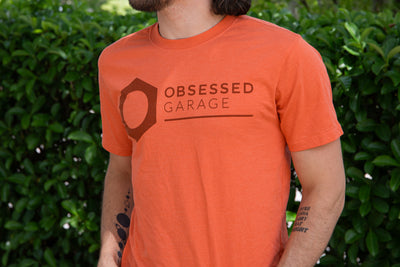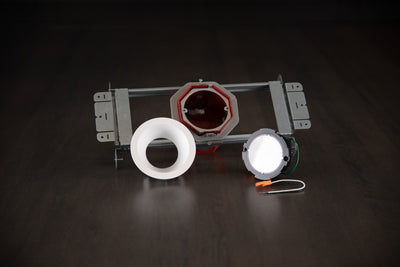What Is Car Paint Correction and How To Do It Yourself

A fundamental principle I live by and have preached to several people over the years is to paint correct your vehicle before you coat or wax it. Don’t cheat yourself by skipping over this process. To get the best results out of your ceramic coating or car wax, you must do a proper car paint correction. It’s time-consuming, but the outcome is well worth it.
Every vehicle I’ve owned in my adult life has had its paint dialed in. I can’t enjoy the car until I know it’s been properly detailed. Whenever I purchase a new vehicle, I’ll give the car dealership clear instructions not to touch it. Give it to me as is - stickers, gunk, and all. An example of that is when I traded in my M3 F80 for a Ford Shelby GT350. I don’t want them ruining it any more than they already have.
All the crunchies and contaminants are removed before I coat it. Back in the day, I was big on waxing my vehicles until I was introduced to the best ceramic coating for cars. Since then, I’ve been in love with the science behind them, and the look it gives my paint’s surface.
What Is Car Paint Correction?
If you’re here, then you’re either curious about how to remove defects (blemishes, scratches, swirls) from your car’s paint, or you just want a simplified explanation of what this whole paint correction process entails. No worries; Uncle Matty’s got you.
Simply put, vehicle paint correction is shaving your clear coat down to the point where the paint is free from swirl marks and scratches using a machine polisher. Now, depending on the condition of your paint (deep scratches, heavy marring), you will likely have to do multiple stages. Stages just imply how many cutting or polishing sets you need to go through with your preferred microfiber pads and liquid compound/polishing solution to get the results you want. Some car manufacturers have soft paint, while others have hard paint. These circumstances will also determine how many stages you’ll have to go through in the correction process.
Depending on your obsessiveness level, you’re chasing after perfect or good enough paint. If I’m going to spend the time to assess and execute this entire procedure, you better believe I’m going to chase after as close to perfect as I can get - this is not to say you can’t get a good outcome doing just a satisfactory job. Most people will be satisfied with the improvements they see doing just the basics because there will be a noticeable difference.
Proper Paint Correction Steps
Before I jump into the DIY steps for paint correction, you want to be sure to do the decontamination process first. This procedure gives the protection you’re installing, whether a ceramic coating or wax, the best bond to your paint’s surface. What you will experience with your protection is better performance and longevity. Again, don’t cheat yourself by skipping these critical processes; they all matter in the end.
Decontamination Steps
- Decon soap. Foam your vehicle down with our decontamination soap. I’m using the PF22.2 foam cannon. 150mL of product, and I’ll fill the rest of the foam cannon with water to about 750mL, then mix (or shake the bottle). Let the foam dwell on the vehicle’s surface for about 5-minutes before rinsing off. FYI: This stuff has a pH of 10, so it is alkaline.
- Rinse off. Grab your spray gun and wand and rinse the decon soap off.
- Contact wash. Some people will do a touchless decon wash; I’m going to treat this like a regular hand car wash and make contact with the paint using the two-bucket method with a microfiber wash pad.
- Rinse again and chemically decontaminate. Rinse off decon soap and Spray iron remover (Iron Buster) liberally all over the car and let it sit for a few minutes. This step is chemically decontaminating your paint. You’ll notice that it turns purple when activated - removing all the nasties (contaminants) from the surface. Two things to note: 1) Don’t let this stuff dry on your paint, and 2) Don’t apply in direct sunlight.
- Mechanical removal. Rinse off iron remover and then spray McKee’s 37 N-914 (a rinseless wash) on the surface. This solution will be the clay lube you’re using in conjunction with a NanoSkin AutoScrub Sponge to get even coverage. In this step, you’re removing whatever crap remains on the surface. We’re using the same dilution ratio as a waterless wash, which is 1:128 in a Pressol sprayer bottle.
- Rinse and dry. Once the mechanical removal process is complete, you’re ready to rinse and dry. I like to use an EGO leaf blower and a high pile microfiber towel.
Remember, overboard is what I do. The above steps will be necessary to prep your vehicle for the compounding and polishing process. To see my complete decontamination process, check out the decon wash video I did on my previously owned Tesla Model 3.

Compounding and Polishing Then Adding A Coating or Wax
The real work begins here before we coat or wax the vehicle. I will share a concise version of the compounding and polishing steps below; if you want to see the whole process, I did a series with my Tesla where I covered correcting and polishing.
If You’re Going to Ceramic Coat Your Vehicle
- Compound/polish your vehicle. You’re going to compound/polish your car with Jescar Correcting Compound and Sonax Perfect Finish - only compound if it is needed. The key to paint correction is to be as least aggressive as possible. If you are uncomfortable with compounding/polishing your car or don't have or want to get the equipment needed to do it, you can skip it. Just know that any swirls or "love marks" in the paint will remain.
- Wipe down. After the compounding/polishing process, you will wipe the car down with an intensive polish and oil remover, like CARPRO Eraser. The main use of this solution is to dissolve/remove oils left behind after polishing.
- Apply your ceramic coating. By a long shot, Gtechniq’s Crystal Serum Light is my favorite ceramic coating. The easy application, slickness, and shine you get from this stuff is fantastic. You only need one layer of this stuff, and you’re done. You’d apply it with a foam applicator block and suede applicator cloth and wipe it off with one of our coating removal microfiber towels.
- Protect the protection (if you want). I like to add a sacrificial layer to my coating, which is where EXOv4 (a hydrophobic coating) comes into play. EXO delivers a hard film that offers resistance to all wash chemicals and can help withstand micro-marring. I also love the high-gloss, warm look it leaves. Crystal Serum Light and this are perfect together. After CSL (Crystal Serum Light) has fully cured, you'd install this.
- Wipe off. Similar to step 4, you will use our coating removal towels to wipe off EXO.
The cure time for CSL is 3 hours per the instructions, but I’d suggest you let it cure overnight. You want it to bond to the paint. After that, you would apply EXO.
If You’re Going to Wax Your Vehicle
Waxing your car is super simple, especially in comparison to coating it. You only need a few tools, and you’re done. Keep in mind a wax is going to wear off in about 9 months, and that’s if you’re doing regular maintenance washes. This is why I like to coat my vehicles; I’ll get up to 5 years of protection and shine.
You’ll notice similar steps below with installing a wax as you see above with coating. A few things will be different. Steps 1 and 2 are the same (the compounding and polishing parts), but everything else will be different.
Instead of “applying your ceramic coating” in step 3, you’d install what I think is the best car wax on the market and has been for years - Collinite 845. The steps below would begin after you’ve compounded and polished your vehicle.
- Install wax. Apply this wax to the surface after installing a polymer paint sealant (like Jescar Power Lock Plus). Let cure for 3 hours. I did my Dad’s WRX many moons ago, where I demonstrated applying a sealant and wax. If you want a complete walkthrough of my way of doing it, you’ll want to watch both of those in their entirety.
- Thin layer. Apply a thin layer to the entire vehicle using an Adam's Hex Foam Applicator pad. The thinner, the better.
- Wipe off. When you've finished applying, it will be ready to wipe off. I’ll use a wax removal towel to wipe off. You could use something like McKee’s Rinseless Wash diluted in a spray bottle as lubrication to aid in wiping.
- Let cure overnight. I like to give it about 12 hours, but that may be more placebo than anything.
- Another coat. Apply another coat using the same process.
You will get a haze that shows up a few days later. Resist the temptation to wipe it off and scratch all of your hard work. Wait until you can perform a complete wash. It won't hurt anything even if you take a few days to wash it. You are simply seeing the oils coming to the surface.
The haze will generally not come back after that. You'll maintain your wax using the Obsessed Garage Drying aid as your paint sealant. I usually get 6-9 months of protection from the wax. Assuming you don't have tons of contamination, you can add layers every few months to maintain and help it last much longer.
You can clearly see several steps and processes are involved in dialing in your paint. But, I’m telling you, it makes detailing your car so much easier along with the look and finish. Do the work; reap the rewards.



